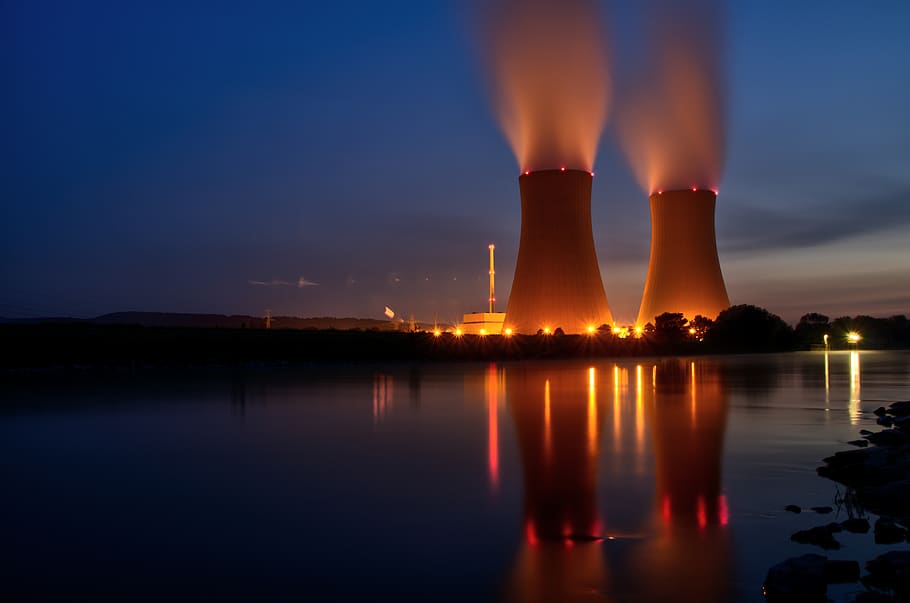Generation nuclear
Contents |
[edit] Introduction
ICE’s insights paper examines the benefits and challenges of delivering new nuclear power in the UK. This short blog explores some of the key themes covered in the paper.
[edit] A nuclear future?
Hinkley Point C is the first UK new build nuclear reactor for several decades. This third-generation plant could provide the blueprint for others to follow, but can this low-carbon solution deliver at scale in a cost-effective way?
Rising demand, the electrification of our transport and heat networks and increasing digitisation could mean that keeping the lights on becomes more challenging than ever before.
This comes as the nation is taking steps to alter how we generate electricity for a net-zero emissions future. In the coming decades, the UK’s energy mix will move away from dependable, yet polluting, oil, coal and gas. In fact, the country is going months at a time without burning any coal at all.
Renewables have somewhat stepped into the breach and now provide around 40% of electricity generation. However, generating power using renewable technologies is not without its challenges, and the UK is perhaps neglecting the potential nuclear presents as an alternative low-carbon source of electricity.
[edit] Nuclear as part of a diverse energy mix
Nuclear, like traditional power plants, provides power by heating water into steam which drives turbines. This source of power is reliable and carbon free, meaning it can contribute to the de-carbonisation of electricity generation without the downside intermittency of solar and wind technologies that are currently susceptible to the changing weather.
There have, however, always been cost concerns with nuclear and many projects have gone over budget around the world. Only a handful of third generation plants have been completed.
While there is hope that a programme of repeatable plant designs and reforms to financing could bring costs down, the advice from the National Infrastructure Commission has been to only agree to one more nuclear project before 2025.
[edit] Building new capacity
This advice stands in contrast to past government ambitions when plans were drawn up to build up to eight new nuclear plants before 2025. Only one, Hinkley Point C, is likely to be completed by this time.
The Government has recently consulted on adopting a form of the Regulated Asset Base model for the nuclear sector, which will change how the sector is financed. This is a potentially important step given that up to two thirds of the cost of a new power plant can be taken up in financing the project.
In the longer term, small modular reactors which could be built more easily, using manufacturing and off-site construction techniques, could supplement major nuclear sites, promising lower cost, more flexible and more rapidly deployable power generation.
[edit] New horizons
Some polls suggest only a third of UK adults have a favourable view of nuclear, and many younger people neither understand the technology or the benefits it can provide. Yet it is necessary for the UK to have a diverse energy mix.
While renewables are promising, they are not always on. It will be some time before the grid can adapt to build up storage capacity or run using mainly intermittent supply. Hence, if the nuclear sector can improve its cost effectiveness, it will be an integral part of meeting our future power needs and reaching net-zero.
The full paper is available to download from this link: Civil engineering insights into nuclear new build in the UK.
This article originally appeared on 9 July 2020 under the title, 'Generation nuclear? Civil engineering insights into nuclear new build in the UK', on ICE's Infrastructure Blog. It was written by Ben Goodwin, Lead Policy Manager.
--The Institution of Civil Engineers
[edit] Related articles on Designing Buildings
Featured articles and news
Infrastructure that connect the physical and digital domains.
Harnessing robotics and AI in challenging environments
The key to nuclear decommissioning and fusion engineering.
BSRIA announces Lisa Ashworth as new CEO
Tasked with furthering BSRIA’s impressive growth ambitions.
Public buildings get half a million energy efficiency boost
£557 million to switch to cleaner heating and save on energy.
CIOB launches pre-election manifesto
Outlining potential future policies for the next government.
Grenfell Tower Inquiry announcement
Phase 2 hearings come to a close and the final report due in September.
Progress from Parts L, F and O: A whitepaper, one year on.
A replicated study to understand the opinion of practitioners.
ECA announces new president 2024
Electrical engineer and business leader Stuart Smith.
A distinct type of countryside that should be celebrated.
Should Part O be extended to existing buildings?
EAC brands heatwave adaptation a missed opportunity.
Definition of Statutory in workplace and facilities management
Established by IWFM, BESA, CIBSE and BSRIA.
Tackling the transition from traditional heating systems
59% lack the necessary information and confidence to switch.
The general election and the construction industry
As PM, Rishi Sunak announces July 4 date for an election.
Eco apprenticeships continue help grow green workforce
A year after being recognised at the King's coronation.
Permitted development rights for agricultural buildings
The changes coming into effect as of May 21, 2024.























